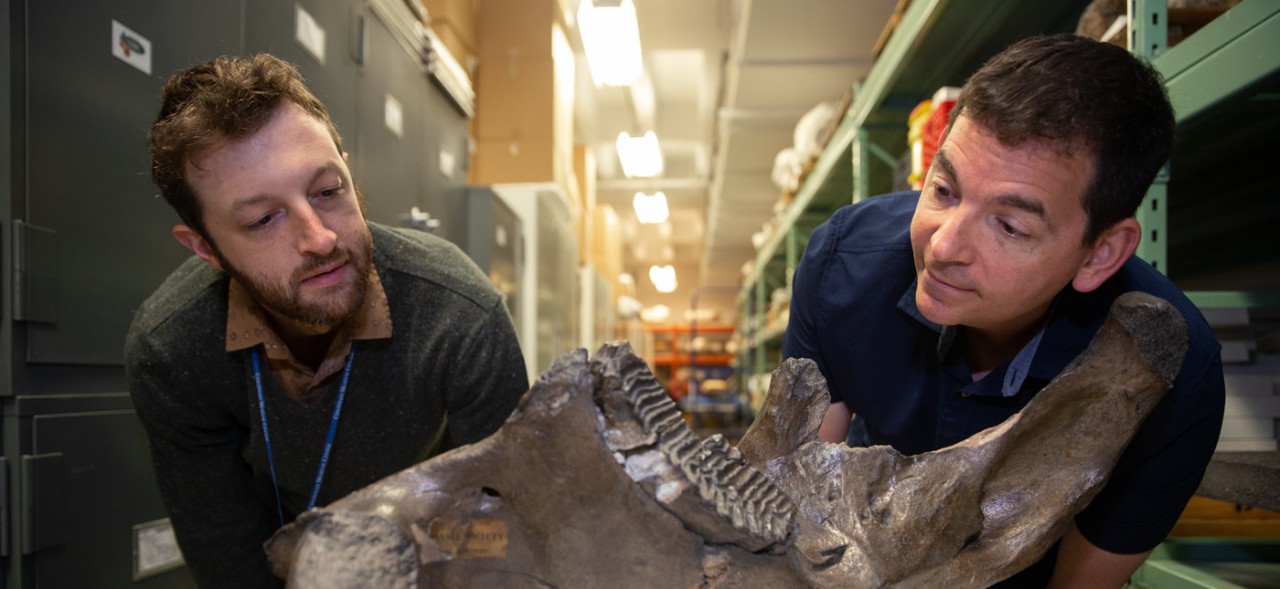
Forbes: When did mammoths go extinct?
Environmental DNA can be misleading, UC paleontologist says
Forbes talked to a University of Cincinnati paleontologist about why environmental DNA is not the best barometer for dating extinctions.
UC College of Arts and Sciences assistant professor Joshua Miller was lead author of a paper published in Nature titled “When did mammoths go extinct?” that refuted a previous study suggesting mammoths went extinct much more recently than believed.
“We can radiocarbon date all kinds of things: bones, teeth, charcoal, leaves. That’s very powerful. But currently, we can’t independently date DNA found in sediments,” Miller told Forbes.
Miller said environmental DNA can persist for thousands of years in arctic climates, making it unreliable for dating extinctions.
Miller said mammoths probably went extinct between 10,000 and 13,000 years ago. Some island populations survived longer.
Featured image at top: Cameron Schwalbach, paleontology collections manager for the Cincinnati Museum Center’s Geier Collections and Research Center, and UC assistant professor Joshua Miller examine a mammoth skull. Photo/Andrew Higley/UC Marketing + Brand

UC assistant professor Joshua Miller poses with a bronze mammoth outside the Cincinnati Museum Center's Geier Collections and Research Center. Photo/Andrew Higley/UC Marketing + Brand
UC Geosciences in the News

UC associate professor Joshua Miller examines a mammoth tusk at the Cincinnati Museum Center's Geier Collections and Research Center. Photo/Andrew Higley/UC Marketing + Brand
- Spectrum News: Paleontologist disputes date when mammoths went extinct
- European Times: New study refutes timeline of mammoth extinction
- Science Times: When did mammoth extinction take place?
Related Stories
How aerospace is turning to trustworthy AI
January 6, 2026
UC College of Engineering and Applied Science graduate Lynn Pickering talks to the Ohio Federal Research Network about her research into artificial intelligence and the future of AI in aerospace engineering.
UC's art collection on display at the Contemporary Arts Center
January 5, 2026
University of Cincinnati leaders joined WVXU's Cincinnati Edition to talk about the university’s 200-year-old art collection, a new exhibition at the Contemporary Arts Center and the release of a companion book exploring the collection’s role in education and public engagement.
UC faculty and staff among Rising Star leadership honorees
January 5, 2026
Two UC faculty and staff members are among this year's Rising Star leadership program sponsored by YWCA Greater Cincinnati. Kelli Beecher, assistant professor in the UC College of Nursing, and Brittany Bibb, assistant director of programs and operations in the UC Division of Student Affairs, are among the emerging leaders of 2026. They were featured in the publication Movers & Makers.
